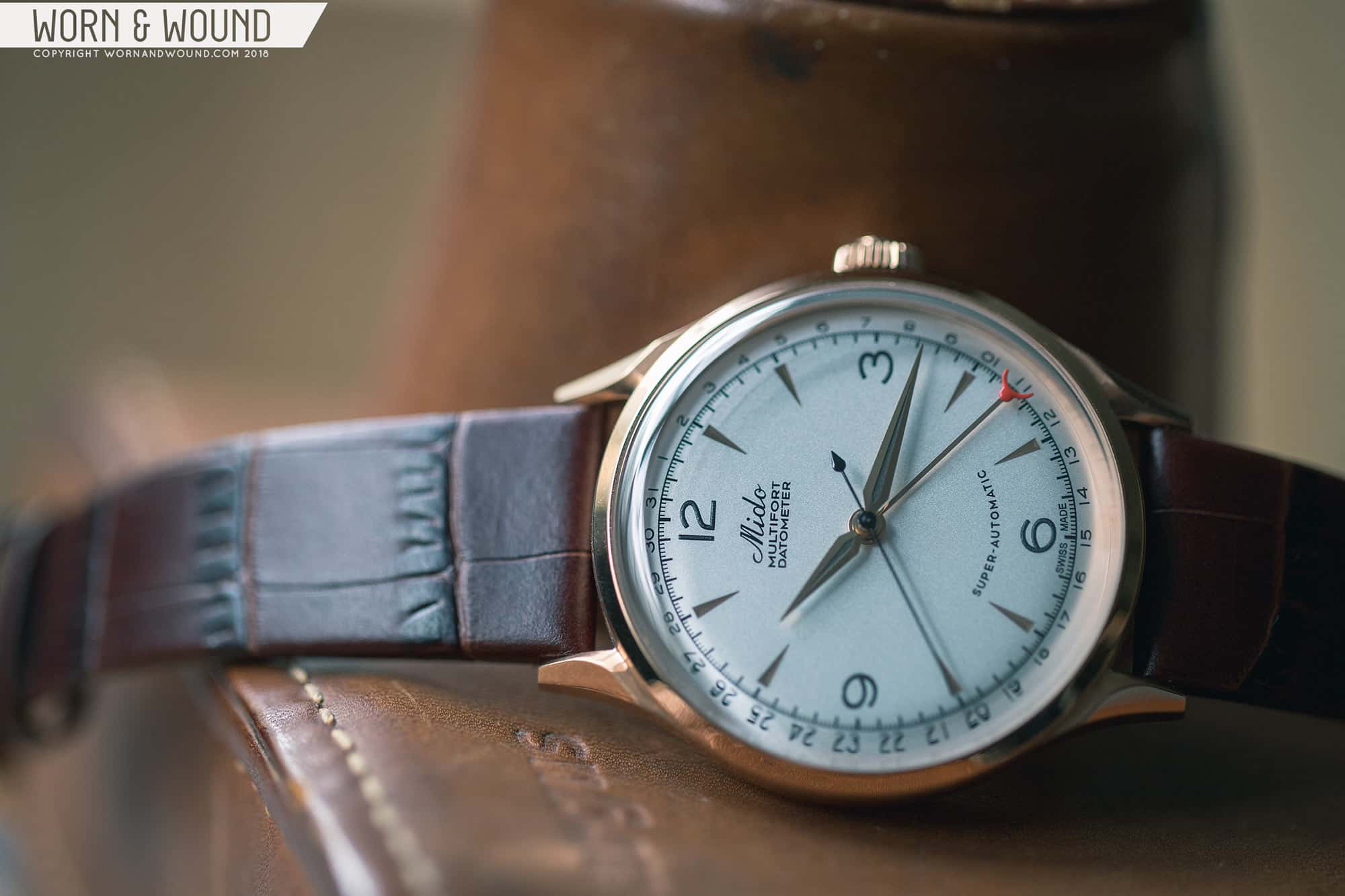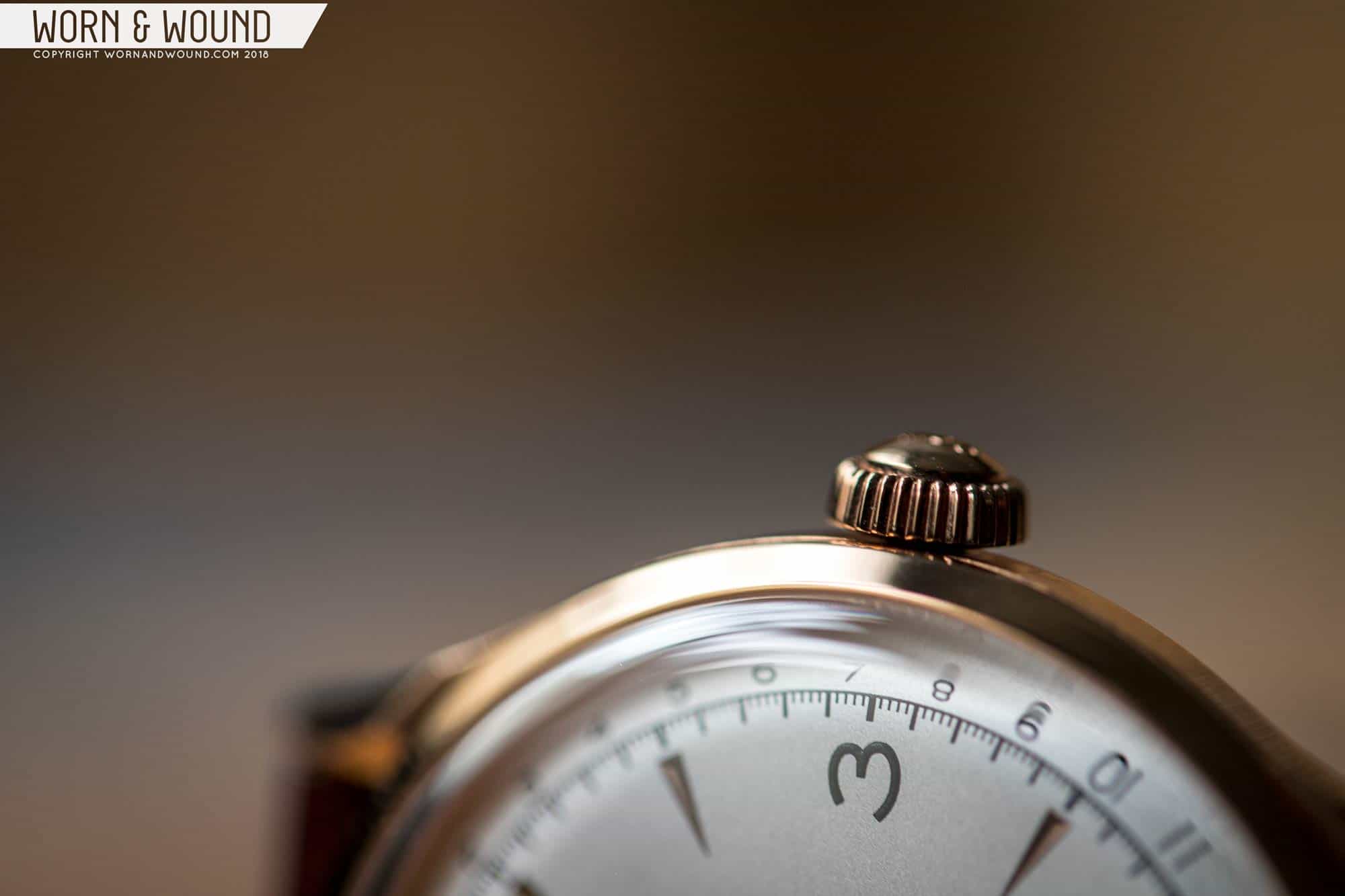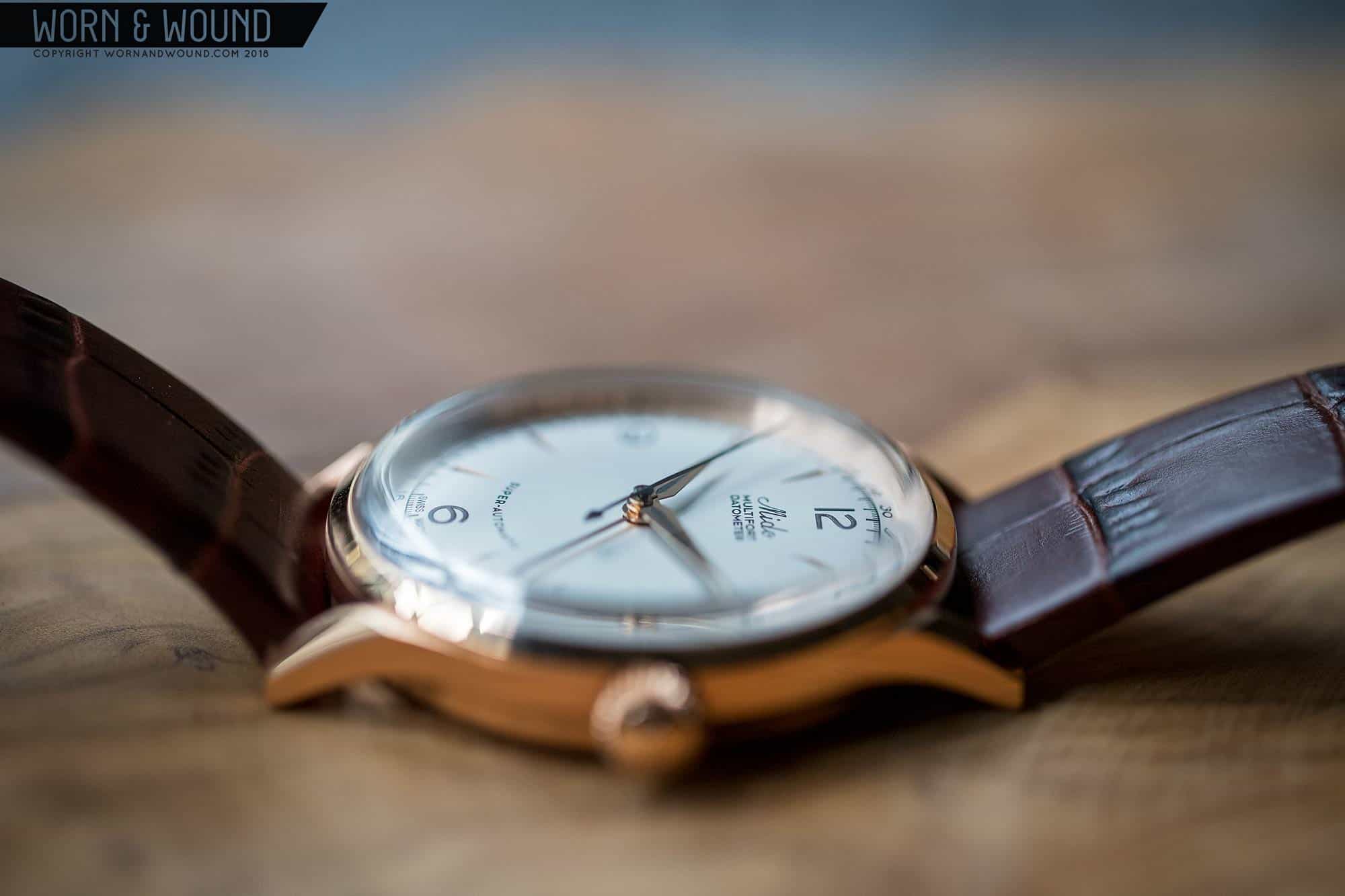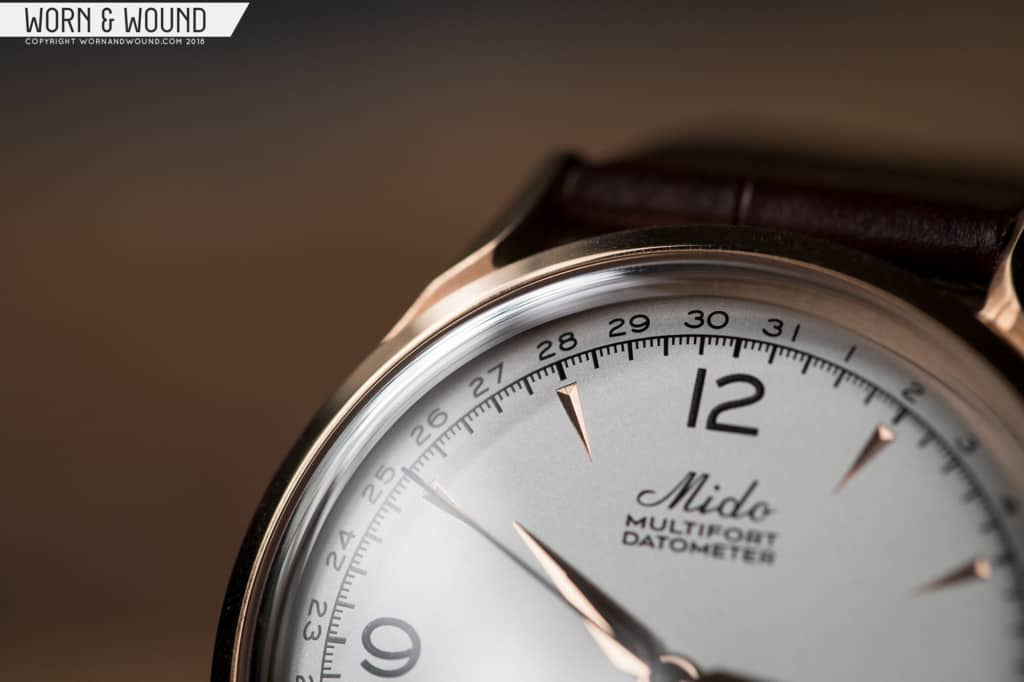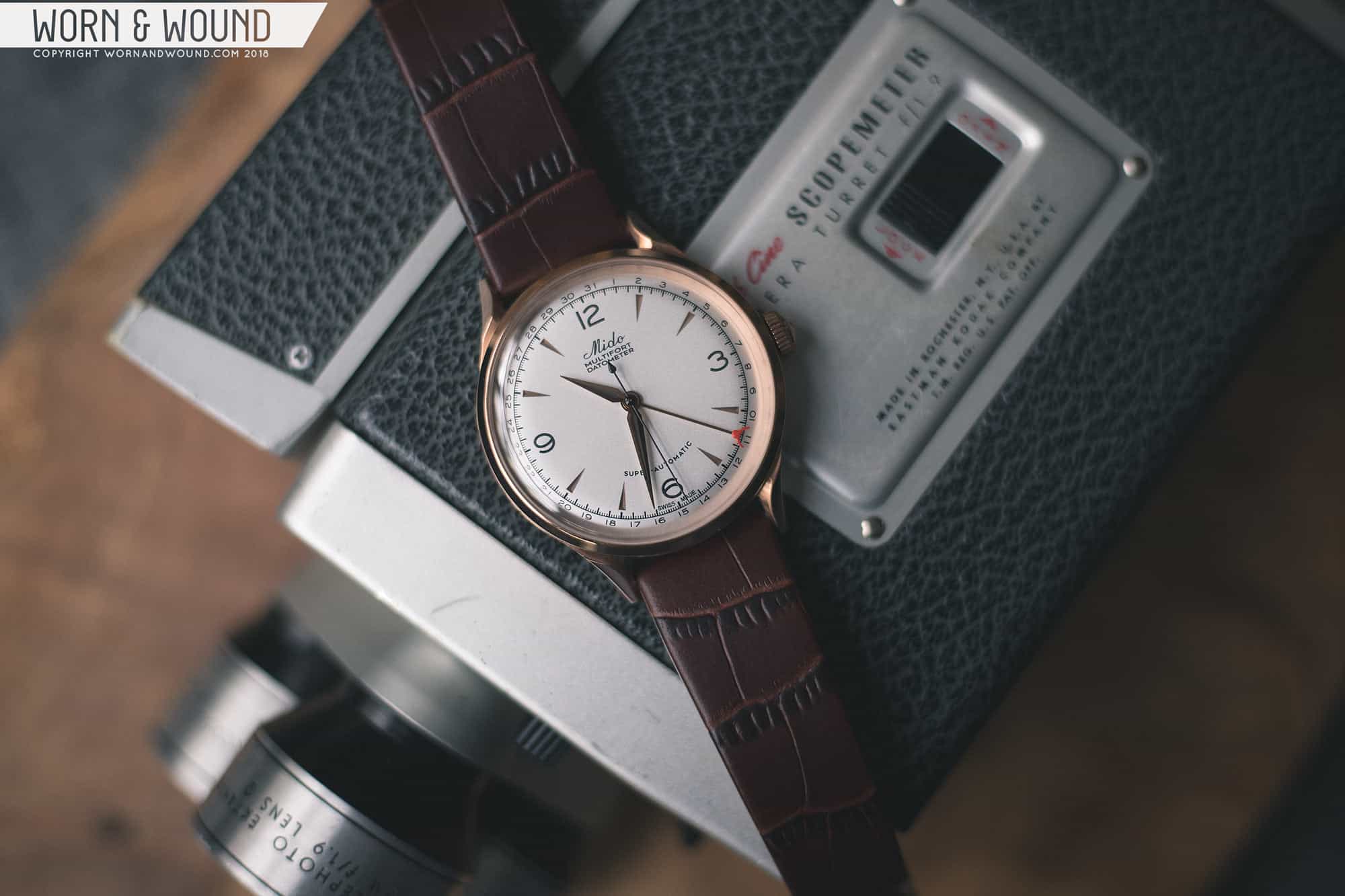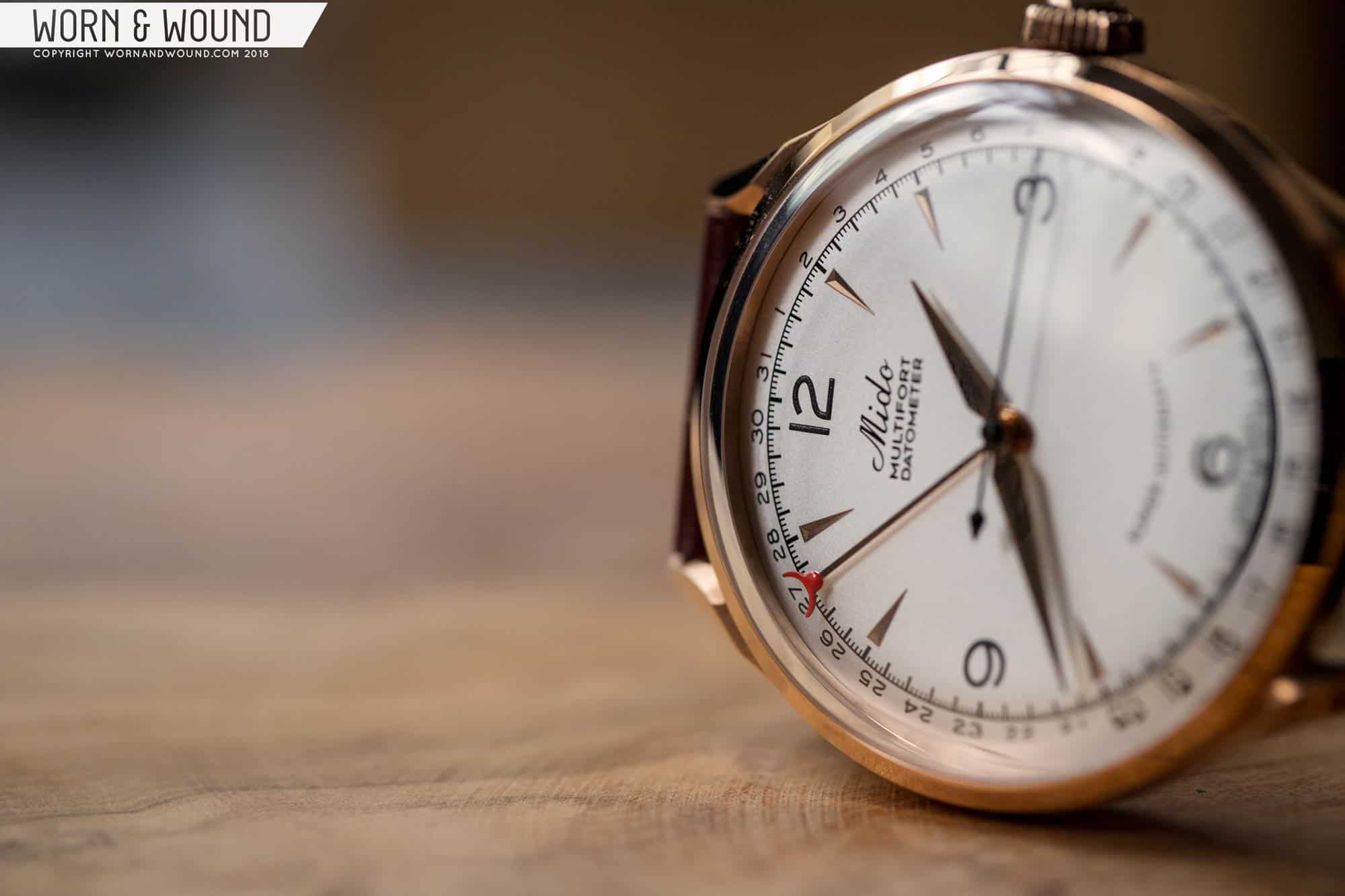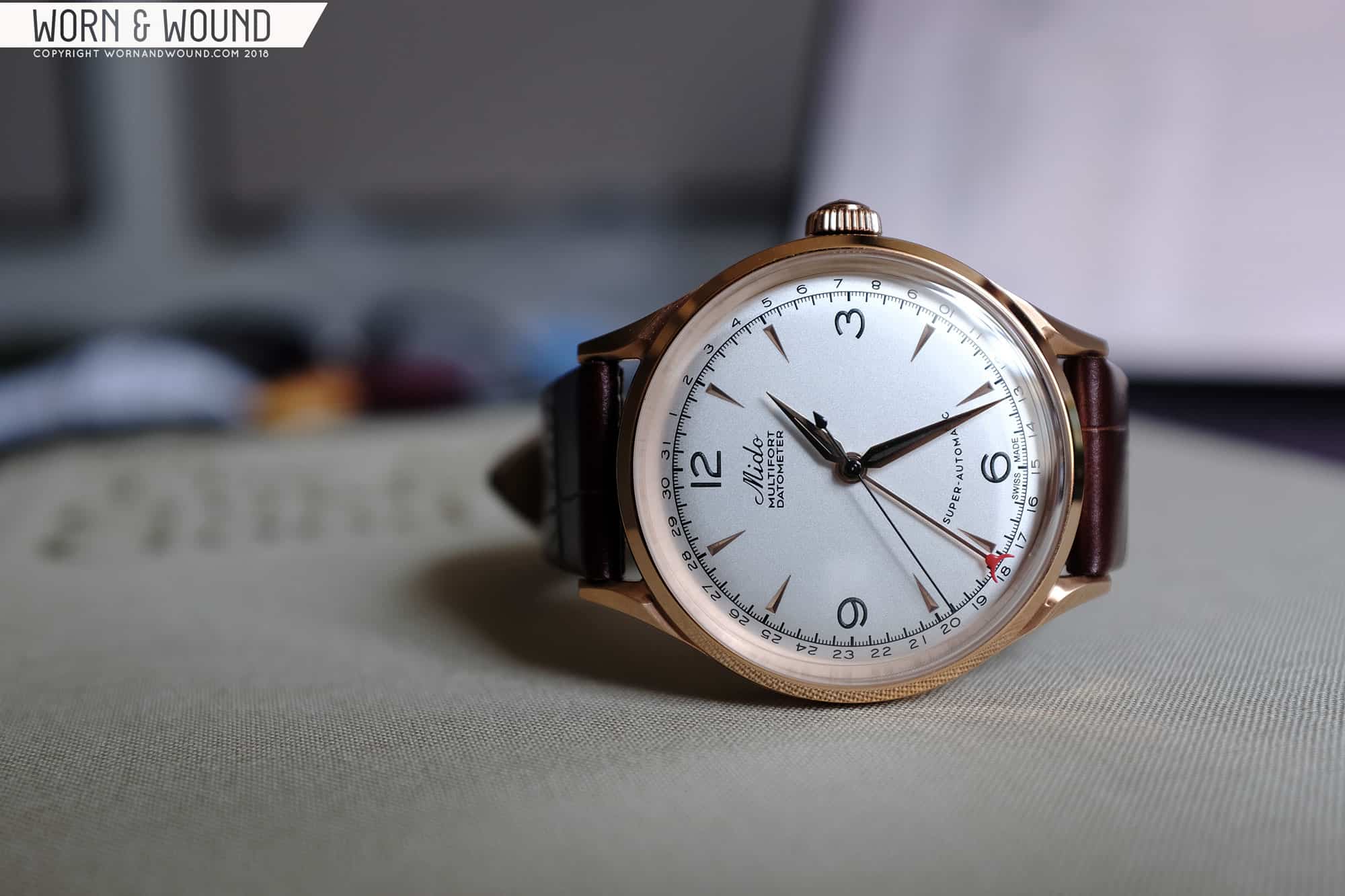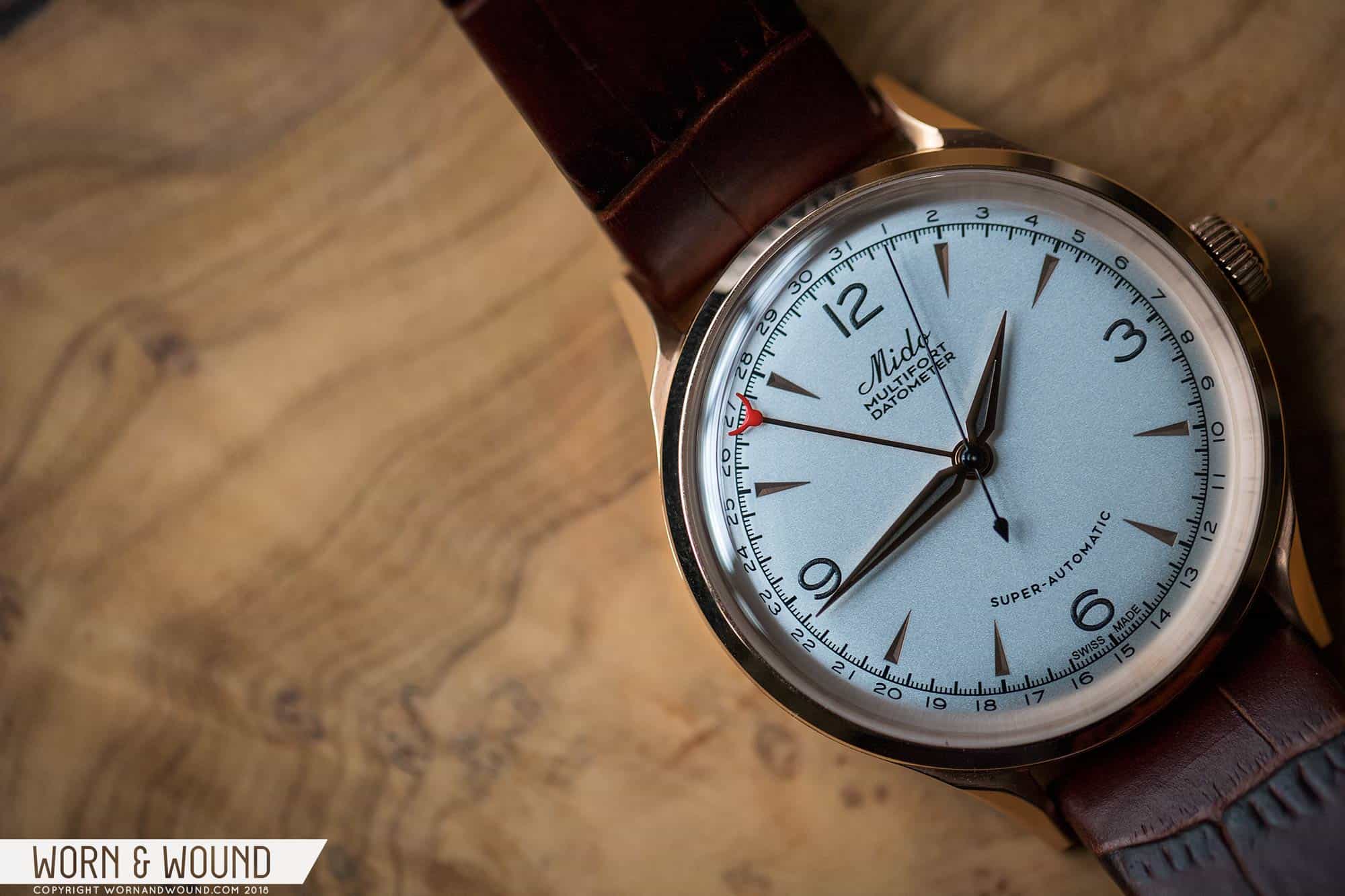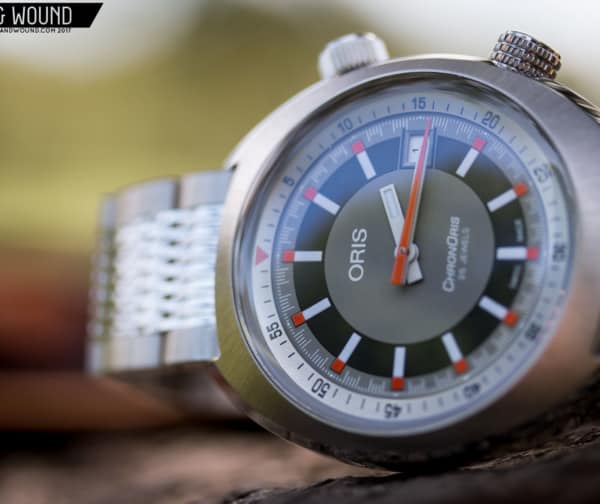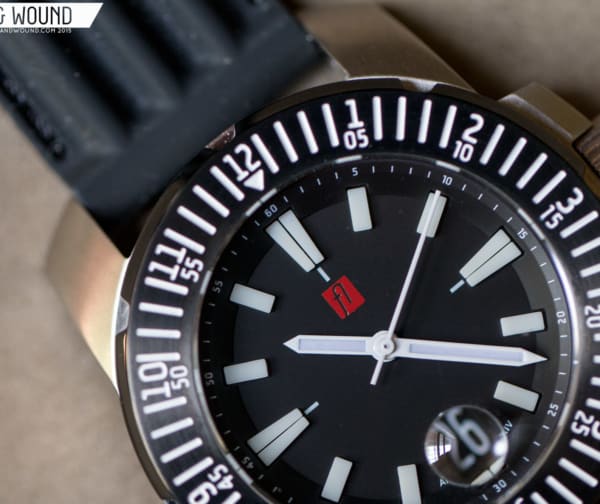The dial is very faithful to the original, and it’s a joy to look at. Sure, it’s rendered larger than the original was to fill out the case, but the proportions are about the same, the pointer date prevents any weird date-window placement, and the execution is flawless. Looking closer, you’ll find the surface is a soft, blasted silver that gently domes down towards its edge. The primary index then consists of large 12, 3, 6, and 9 numerals printed in black in a great typeface and thin triangular markers in rose gold.
Initially, and actually for a little while thereafter, I thought these were applied markers, and then I realized that they were actually concave. That is to say, they aren’t on top of the dial surface, but are indented, which gives a very curious effect of reflecting light the opposite way from what you’d expect. I imagine the reason behind this was to allow for hand clearance, specifically for the date hand as it rides close to the dial. Regardless, it’s very cool and an unexpected detail to ogle.
![]()
Encircling the hour index is then a seconds/minutes track with heavy markers at intervals of 5, lighter markers for each second/minute, and short thin markers for every 1/5th of a second. By being a closed index, it shrinks the dial visually, which helps the watch read a bit smaller. On the very edge of the dial is the date index with numerals from 1 – 31. Oddly, the numbers are placed such that 31 is just past 12, which just seems a bit off logically, though it doesn’t impact reading the date at all.
For the hands, Mido stuck with the original’s design and went with rose gold alpha hands for the hours and minutes. Rather than lume, both are filled with matte black paint, which is another great detail. It breaks up the hand’s surface so there isn’t too much gold, but it doesn’t feel out of place like lume would have. The seconds hand is then a black stick with a tear drop counter weight and the pointer-date hand is a gold stick with a red, crescent-shaped tip that cradles the date. The use of red here, a throwback back to the original, is a great touch, and it adds a pop of color to an otherwise metallic setting.










 Featured Videos
Featured Videos




